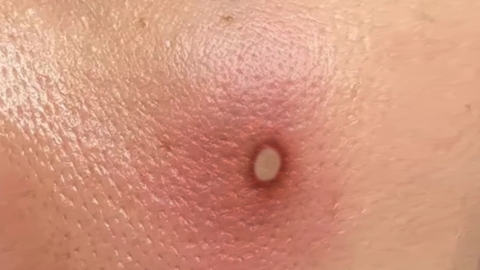How to treat a boil most effectively
Generally speaking, there is no such thing as "how to treat a boil the fastest." The difficulty in quickly resolving boils may be caused by inadequate skin cleansing, local friction and irritation, bacterial folliculitis, superficial cellulitis, secondary immunodeficiency disease, and other factors. It is recommended to seek timely medical attention, identify the underlying cause, and follow medical guidance to improve the condition through local care, medication, and other methods. The specific analysis is as follows:

1. Inadequate skin cleansing: Sweat and dirt accumulated on the skin surface can block hair follicles, leading to bacterial overgrowth and the formation of boils, which manifest as localized redness and swelling. Clean the affected area and surrounding skin daily with warm water, dry thoroughly afterward, wear loose and breathable clothing, change clothes frequently, and reduce opportunities for bacterial adhesion.
2. Local friction and irritation: Long-term wearing of tight clothing or frequent touching of the affected area can damage hair follicles, making them susceptible to infection and the formation of boils. This is commonly seen in areas prone to friction, such as the waist and neck. Change to loose cotton clothing, avoid repeated contact between the affected area and clothing or objects, reduce external irritation, and prevent further damage to the hair follicles.
3. Bacterial folliculitis: Inflammation occurs when hair follicles are infected by Staphylococcus aureus. If not promptly controlled, it can develop into a boil, accompanied by mild pain and small white dots at the follicular openings. Follow medical advice to apply topical medications such as mupirocin ointment, fusidic acid cream, or compound polymyxin B ointment to inhibit bacterial proliferation, alleviate inflammation, and prevent worsening or spreading of the inflammation.
4. Superficial cellulitis: Boil inflammation spreads to the subcutaneous superficial connective tissue, the redness and swelling area expands, pain intensifies, and local skin temperature may rise. Follow medical advice to take oral medications such as cefuroxime axetil tablets, azithromycin dispersible tablets, or levofloxacin hydrochloride capsules to control the infection.
5. Secondary immunodeficiency disease: For example, long-term use of glucocorticoids can lead to reduced immune function. Patients' skin resistance weakens, resulting in slow healing and easy recurrence of boils. Under medical guidance, adjust the dosage of glucocorticoids while using medications such as transfer factor oral solution, thymopeptide enteric-coated tablets, or pidotimod oral solution to enhance immune function, strengthen the skin's ability to resist infection, promote healing of boils, and reduce recurrence.
In daily life, avoid spicy and greasy foods, eat more fresh vegetables and fruits rich in vitamins to provide necessary nutrients. At the same time, avoid squeezing boils by yourself. Promote their rapid resolution through scientific care and treatment, and maintain skin health.







